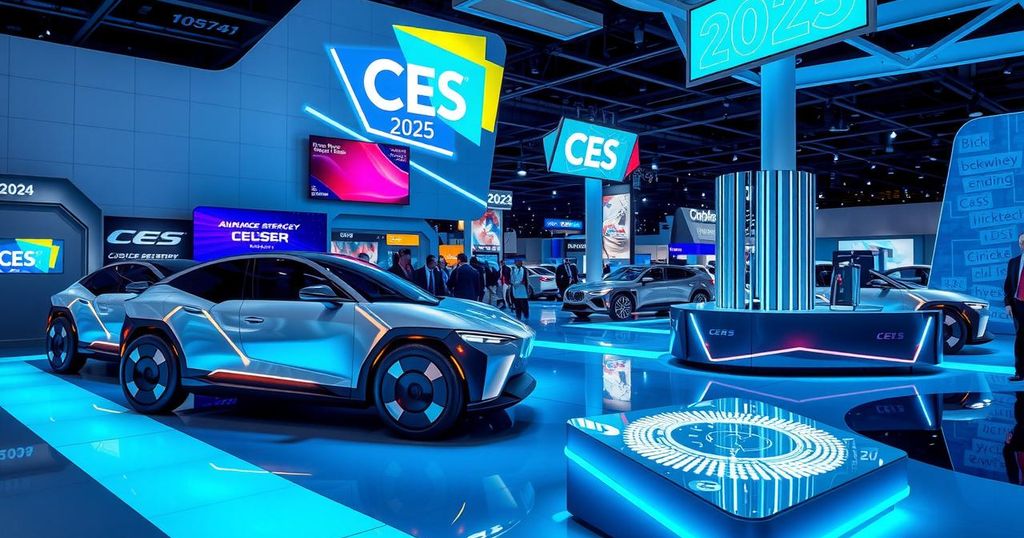Arm at CES 2025: AI Innovations and Technology Highlights
CES 2025 in Las Vegas showcased Arm’s pivotal role in advancing AI and automotive tech. Highlights include a partnership with Aston Martin, NVIDIA innovations, the introduction of impactful consumer technologies, and a focus on sustainable AI. Arm’s contributions signal an exciting tech landscape ahead, driving efficiently in various industries.
CES 2025 in Las Vegas turned out to be a hot spot for all things tech, featuring the latest and greatest innovations shaping industries everywhere. This year, notable advances in autonomous driving and consumer tech really stole the show. Arm’s presence at CES reflected its commitment to pushing boundaries in AI technology, solidifying its role in the rapidly evolving landscape.
A standout moment for Arm was the announcement of a multiyear partnership with the Aston Martin Aramco Formula One Team, making Arm the ‘Official AI Compute Platform Partner.’ This collaboration aims to enhance AI and computational advancements, gearing up Aston Martin Aramco to amp up performance—both on and off the racetrack.
As part of their CES activities, Arm’s Chief Marketing Officer, Ami Badani, and Dipti Vachani, Senior VP of Arm’s Automotive Division, dialogued with Jessica Hawkins of Aston Martin and Charlie Blackwall. They discussed the partnership’s potential to boost equity and inclusivity in motorsports and STEM fields, while also inspiring future engineers and racers.
Before CES officially kicked off, NVIDIA unveiled innovative AI technologies in Jensen Huang’s keynote. Arm technology plays a crucial role in NVIDIA’s offerings for consumer and commercial vehicles. This includes a cutting-edge personal AI supercomputer that’s all set to help developers innovate.
During the keynote, Huang also announced the NVIDIA DRIVE AGX Thor™, a centralized compute system tailored for advanced automotive applications. Notably, it’s the first to integrate Arm’s Neoverse V3AE—specifically designed for the automotive sector. Major automakers like Jaguar, Mercedes Benz, and Volvo are gearing up to harness this technology in software-defined vehicles.
In a further exciting development, Toyota joined other notable OEMs in using Arm-based NVIDIA DRIVE Orin technology, highlighting an industry shift towards smarter vehicles. For deeper insights into this partnership, check out Dipti Vachani’s blog.
NVIDIA’s Project DIGITS is another buzzworthy announcement aimed at democratizing AI by giving developers access to high-performance computing right on their desks. It’s driven by the NVIDIA GB10 Grace Blackwell Superchip, featuring powerful Arm CPU cores. Together with NVIDIA’s ecosystem, the industry anticipates a wave of groundbreaking AI applications.
Arm’s influence on the automotive sector was prominently featured at CES, with a whopping 94% of global car manufacturers reportedly utilizing Arm-based tech in their latest vehicles. The Honda SUV Zero, unveiled at the event, perfectly demonstrates this trend, signaling serious innovation ahead.
A collaboration between Renesas and Honda during CES confirmed plans to develop a robust system-on-chip for a new generation of software-defined vehicles, incorporating Arm technology for both application processing and real-time performance.
The session titled “Revolutionizing the Future of Driving – Unleashing the Power of AI,” highlighted how trends like electrification, autonomy, and enhanced driver experiences rely on solid, scalable computing platforms. Dipti Vachani also engaged in discussions about Arm’s future role in automotive innovation at CES.
Mapbox showcased its virtual prototype platform, which facilitates the creation of Arm-based in-vehicle hardware. This technology significantly enhances how automakers develop and test mapping solutions, giving them finer control before going to market. Meanwhile, AWS Automotive demonstrated how Arm optimizations improved chatbot applications for smart vehicles.
Consumer tech innovations were also abundant, with a wide showcase of new TV products at CES. Eclipsa Audio, developed by a collaboration that includes Google and Arm, ventured into the realm of 3D audio, delving deep into soundscapes that closely mirror reality. Arm aided this project by optimizing codecs for better performance on its CPUs.
Arm made its mark with innovative XR products too; ThinkAR unveiled AiLens smart glasses, which feature edge AI enhancements for various applications like healthcare and education, powered by Arm technology. XREAL also presented its XREAL One Series AR glasses, enabling 3D object generation just through voice commands.
Also in the education sphere, MediaTek displayed its Arm-based Kompanio 838 chip, designed for models targeting gaming and learning. ASUS showcased the Chromebook CZ12, emphasizing rugged design suited for students and powered by MediaTek’s Arm tech.
Alif Semiconductor grabbed attention with the announcement of Arm’s Ethos-U85 NPU being integrated into their new microcontrollers, bringing state-of-the-art AI capabilities directly to endpoint devices. This step is timely, as demand for localized AI processing grows.
On the final day of CES, Badani hosted a panel on sustainable AI with leaders from Meta and NVIDIA. The discussion highlighted the balance between compute power and efficiency, underscoring Arm’s commitment to the future of power-efficient AI technologies.
In synthesis, Arm’s presence at CES 2025 was unmistakable, showcasing cutting-edge technology across industries and underscoring its pivotal role in the AI landscape ahead. Arm’s innovations set the tone for an exciting year to come, reminding us that technology indeed shapes every corner of our lives.
Arm’s showcase at CES 2025 not only demonstrated its integral role in AI and automotive technology but also emphasized collaboration across industries. The partnership with Aston Martin and talks about inclusivity highlighted a commitment to not just innovation, but also social responsibility. With major announcements from NVIDIA and advances in consumer tech, it’s clear that Arm is poised to help shape a tech-driven future. CES 2025 was a glimpse into the wide-reaching impact of technology spearheaded by Arm.
Original Source: newsroom.arm.com




Post Comment